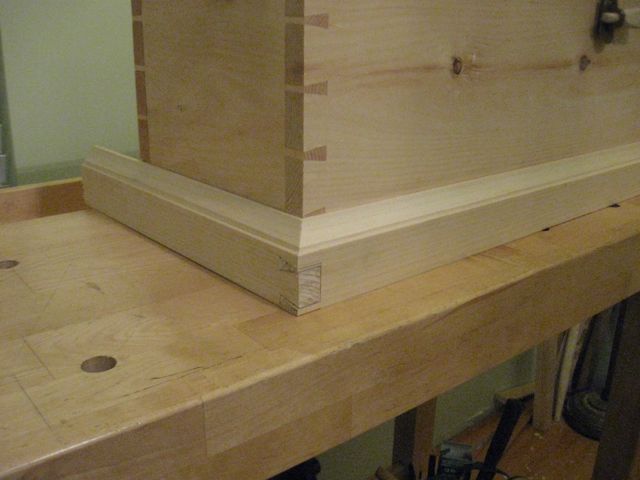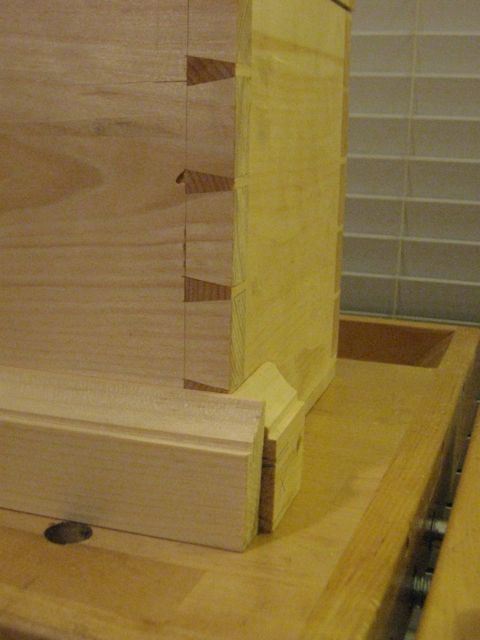My Way of Working Wood
There are currently 3 camps in the woodworking community on which types of tools to use in woodworking,
- Traditional Non-Power Tools only
- Modern Power Tools (with some limited non-power hand tool usage)
- A mixture Traditional and Power Tools
Traditional Non-Power Tools Only
Let’s address the “Traditional Non-Power Tools only” category first as it was the first method used by woodworkers for millennia before power tools were introduced in the late 19th and early 20th centuries. Through innovation and experience, hand tools were developed to the point of near perfection by the time power tools came on to the scene. In all categories for tools to work wood, there were specific tools and processes to shape and manipulate wood. Some of these processes and techniques were preserved in written works by Moxen and Roubo and others. Some have been lost to the ages.
Thanks to the efforts of numerous historical societies, Roy Underhill, and Chris Schwarz at “Lost Art Press”, some of these lost techniques have been resurrected or rediscovered allowing woodworkers everywhere to learn these techniques in order to make more historically accurate and more importantly, better built projects based on this knowledge. Roy and Chris are my modern woodworking heroes and have helped make me a better woodworker. I have had the good fortune to take classes with them in person and glean from them some of this knowledge. This category is gaining more converts every day thanks to the efforts of these men and others in this community who are teaching and sharing their knowledge through the internet and in person in classes and workshops across the world.
As late as 10 years ago in 2000’s there was only a few tool manufacturers who made high quality (as compared to tools make in the apex of hand tool use in the late 19th century). Now we are seeing a new market for these tools and more companies are arising to fill this need. The motivation for companies to produce these tools is linked to this growing community of woodworkers that demand a) High quality durable new tools and b) For them to be made domestically e.g. Made in the USA. One such company is Lie-Nielsen in Warren Maine. Their commitment to quality is second to none. In today’s economy these tools are very expensive, but they will last you a lifetime of dependable usage.
Modern Power Tools
Next, we have the power tool usage category. This is the category that has emerged and evolved over the 20th and 21st century and is used in most all manufacturing and the majority of the amateur and hobbyist woodworking community today. As a young man growing up here in North Carolina, this was the woodworking world I have known from childhood and the one that most frustrated me. First as a child, I remember my dad and also my grandfather using these tools and smelling freshly cut wood and loving that smell.
As a child, I could not operate these dangerous machines, but later as a young man, using hand power tools, I built items that were less than optimal because I had no formal training other than high school shop class where I learned how to use a lathe and how to draw which would come in handy later. The internet had not yet been invented, so YouTube was years away.
There was one thing working in my, and other workers favor, it was the “New Yankee Workshop” with Norm Abram. This show taught me some important techniques and that amazing things could be built if you had all the right tools and a large shop to use them in, but these tools were expensive and generally out of my price range to buy at the time.
Frustrated, in 1997, I decided to sign up for a woodworking class at the North Carolina State University Crafts Center. This was a shop intro class where I would learn the basics of all the major woodworking shop equipment such as the table saw, band saw, power joiner, lathe, disk sander and planer. I also learned how to grind a bevel on a chisel, I built several projects and gained a lot of experience and appreciation using these tools. There was always something about power tools I didn’t like, they scared me, even today I have a healthy respect for how quickly they can hurt you. After that class, I collected various power tools for use in my shop. Currently I have a very nice contractor’s table saw, a vintage Rockwell band saw, a bench drill press and a vintage Craftsman scroll saw and various hand power tools.
Admittedly power tools take less skill to do basic operations and they speed up some jobs quite considerably. One of my sayings is “modern materials need modern tools to work them.” For example, try using a hand saw on a piece of plywood, it will work, but it won’t be pretty.
A mixture Traditional and Power Tools
This brings me to the mix of Traditional and Power Tools. For me, this is the best of both worlds. You can breakdown stock quickly with the power tools and then craft the wood with the pleasure that is hand tools and keep the tool marks and techniques that any woodworker from the early 19th century would recognize. I keep my power tools and hand tools separated (with the exception of the lathe, which I keep my hand tool shop) as the power tools create too much dust and noise, they can not be used in my shop which is inside my house.
Cutting Hand tools rule no. 1 – They must be sharp. This was the first and most important lesson when I took a dovetail class at Roy’s Woodwright’s School in Pittsboro, NC. I didn’t know what a sharp tool was until I took this class. Sharpening your hand tools is a gateway skill that will dramatically and irrevocably improve your ability to work with hand tools.
Unless you are working at a historical preservation site like Williamsburg, or some other similar historical site (or if you are commissioned with a hand tool only order), using only hand tools is not necessary. The way I look at it, power tools do the work of an apprentice and as I do not have an apprentice, the power tools will suffice. I do make exceptions to this in a couple of cases. 1) I use only hand tools when I make a “special” project that I want to be completely done by hand and 2) For modern type projects using modern materials (Like plywood), I will use modern methods and tools.
I do not see the two camps as being mutually exclusive, I happily live in both worlds and I believe my projects have benefited by using both hand and power tools. But given my preference, I will always gravitate to traditional hand tools. I feel a bond to all those woodworkers from the past that used these same techniques and know that we all share the same experience of the unique feel, smells and sounds while we shape wood to our will.
Peace,
-Aaron


